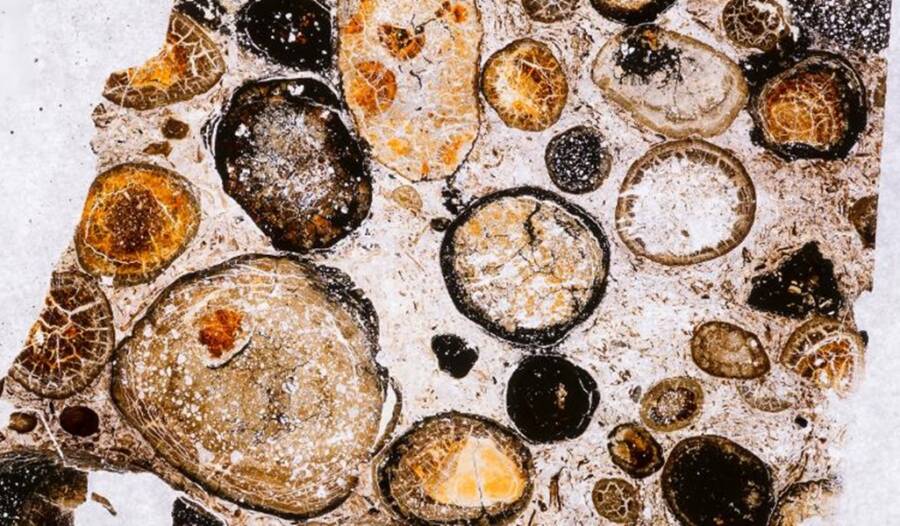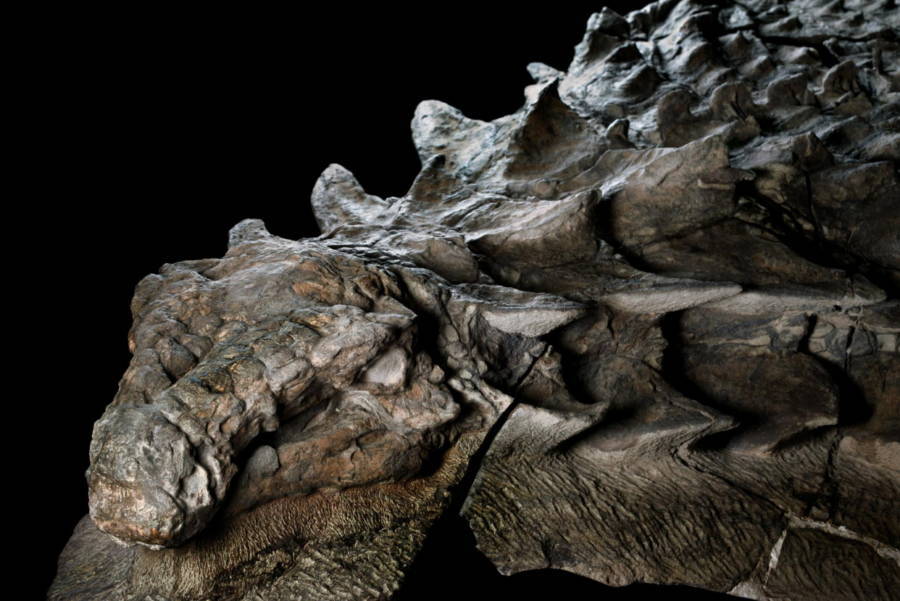"We were shocked to see beautifully preserved and concentrated plant material."

Mark Mitchelli/Royal Tyrrell Museum of Palaeontology The armored nodosaur looked fierce but actually was a herbivore.
About 110 million years ago, a giant plant-eating nodosaur gobbled down its last meal on Earth — and its stomach was preserved so well over time that scientists have now been able to determine what, exactly, its last meal was.
The remarkable specimen was first discovered in 2011 during a mining operation in Alberta, Canada.
The nodosaur was found with its skin and guts intact and was altogether so well-preserved that it was referred to as a dinosaur “mummy.” A researcher involved in the study described the prehistoric specimen as having the best-preserved dinosaur stomach ever found to date.
It took six years for Mark Mitchell, a technician at the Royal Tyrrell Museum of Palaeontology, to carefully dig out the dinosaur’s preserved skin and bones from the marine rock in which it had been encased. His efforts revealed a soccer ball-sized chunk of material left in the nodosaur’s stomach.
“The leaf fragments and other plant fossils were preserved down to the cells,” said David Greenwood, a biologist at Brandon University and co-author of the study.
The nodosaur, or Borealopelta markmitchelli, was an armored giant. Despite its massive weight, which could be over a ton, the nodosaur was a strict herbivore. And based on its stomach contents, its favorite vegetation was likely ferns.

Royal Tyrrell Museum of Palaeontology A closer look at the nodosaur’s stomach contents.
After comparing its stomach contents with fossil leaves from the same time period and territory, researchers noted that the nodosaur was a picky eater and preferred the soft leaves from certain types of ferns.
“The lack of horsetails and rarity of cycads and conifers is surprising, given that these are very common in the surrounding flora,” said Caleb Marshall Brown, curator of dinosaur systematics and evolution at the Royal Tyrrell Museum of Palaeontology. “Even within ferns, it looks like Borealopelta may have had a preference for certain types of ferns while ignoring others.”
In total, researchers found 48 microfossils of pollen and spores, moss and liverwort, 26 club mosses and ferns, two flowering plants, and 13 conifers.
The study also noted that were pieces of charcoal in the nodosaur’s stomach. This turned out to be consistent with its time period, as forest fires were a common occurrence during the early Cretaceous period and ferns, which were low to the ground, could survive.

Robert Clark/National GeographicThis nodosaur is among the best-preserved dinosaur specimens known to date.
Researchers estimated that a fire had indeed ravaged the grazing area of the nodosaur about six months before it ate its last meal in the spring or summer.
“The discovery of charcoal together with a fern-filled stomach… suggested Borealopelta was likely a keystone herbivore that shaped the landscape by its grazing, and that it also grazed on the ferns growing in open areas created by wildfires,” Greenwood said. “That is so cool.”
The study was published in the journal Royal Society Open Science in June 2020.
Next, checkout the newly-discovered dinosaur that was named ‘star lizard’ in honor of David Bowie. Then, read about the 180-million-year-old fossil that scientists believe is the missing link in the crocodile family tree.





